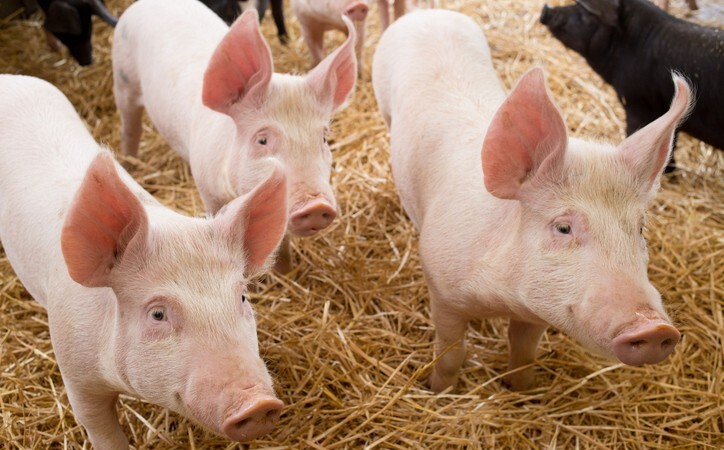

To improve farrowing rate and increase litter size, it is critical that sows cycle fairly quickly after weaning. Several factors affect how soon a sow cycles after weaning – number of pigs nursed, pigs’ age at weaning, parity, body condition, weight loss during lactation, feed and water intake during lactation, temperature of farrowing room, ventilation design, supplemental cooling system, feed intake from weaning to first service, and estrous detection procedures and capabilities of breeding technicians.
Wean-to-first service interval is a key driver for improving farrowing rate and increasing litter sizes of the subsequent litters. The sooner a weaned female returns to heat, the more fertile she is and the more eggs she will shed, thus improving litter size.
Suggestions for reducing wean-to-first service interval:
Weaning age: As weaning age increases, days to cycle should decline. This occurs because the hormone levels triggering estrus decline the lactation length increases. Most sows weaned at 18+ days after farrowing should be in heat within 4-6 days after weaning, on average.
Feed intake: This may be the biggest factor affecting sows’ returns to heat. Feed intake the first 7-10 days after farrowing affects how soon a sow returns to heat, number of eggs produced and their survival in the uterus. Sows must be fed as individuals. Feed intake should average 14-16 lb./day with a weaning age at 18-20 days.
Water intake: Water is the forgotten nutrient. For a lactating sow to optimize feed intake, she must have an adequate source of water. Most farms use nipple drinkers to reduce water wastage and excess spraying of water in the crates. The water line should have a pressure regulator set at no more than 30 PSI with a minimum flow rate of 2 quarts/minute.
Sows only drink a few times a day for a few seconds. They will not compensate for low flow rates. When first-litter gilts are placed in the farrowing crate the first time, it is important to help them locate the water source and how to use it. With gilts, lower the nipple drinkers to a height of not more than 26 in. When a sow in a farrowing crate is not eating, the first thing to check is water flow and volume.
Parity of weaned sows: Low-parity females, especially Parity 1 females, often take longer to cycle after weaning. To help shorten wean-to-first service interval, do not breed gilts weighing less than 300 lb. and be sure they have had 1-2 recorded heat cycles.
Supplemental cooling: Sows in farrowing facilities feel heat stress when temperatures exceed 78-80° F. That is when supplemental cooling, such as cool cells, stir fans, and/or drippers are needed. Stir fans should come on at 80° F. Drippers should be set to come on at 82-84° F. Most are set to run 2-4 minutes, then off for 12-15 minutes. Cooling system should be checked and serviced before warm weather arrives.
Boar exposure and heat checking.
Newly weaned sows need boar exposure starting at Day 1 after weaning to stimulate their hormonal systems. Feeding sows after weaning.
Newly weaned sows need more feed to replenish their body reserves. Giving sows 1.3-2.3 kg/day and 15-30 minutes to eat will not meet their needs. Weaned sows need 2.7-4.5kg of feed until they are bred.
Standard operating procedures for handling sows going into and coming out of farrowing, and their feed and water intake before, during and after farrowing need to be reviewed.
How young females are managed, when boar exposure began and the breeding procedures for newly weaned females also should be reviewed. If you can lower wean-to-first service interval, you will improve farrowing rate and have larger litters in the subsequent farrowing. Remember, a 4% improvement in farrowing rate could increase pigs/sow/year by 1.35 pigs.
 Contact Jaguza Support
Contact Jaguza Support